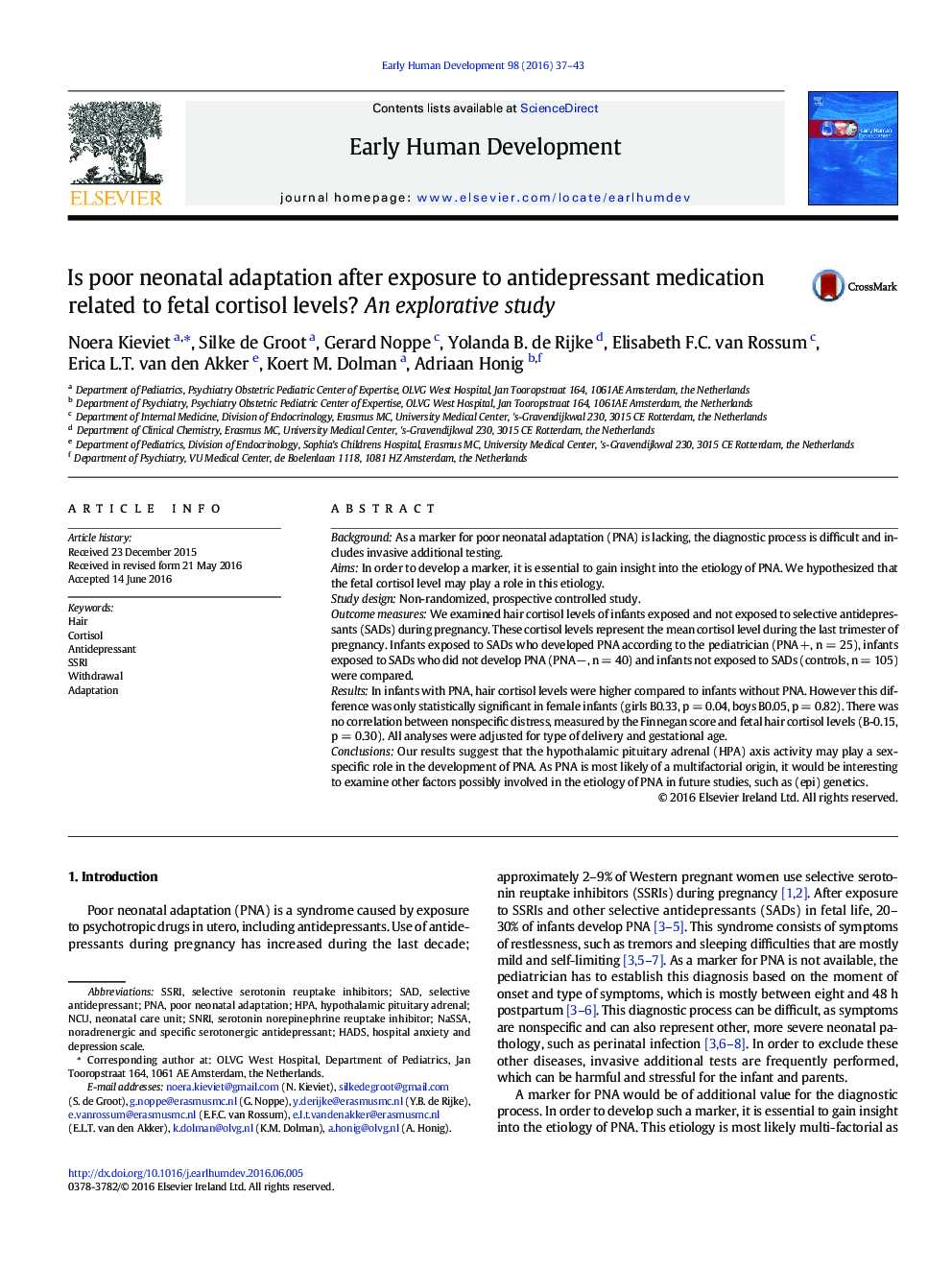| Article ID | Journal | Published Year | Pages | File Type |
|---|---|---|---|---|
| 3916441 | Early Human Development | 2016 | 7 Pages |
•Fetal hair cortisol levels were higher in infants with compared to infants without poor neonatal adaptation.•This difference was only statistically significant in girls, which suggests that the HPA-axis activity may play a sex-specific role.•There was no correlation between nonspecific distress, measured by the Finnegan score and fetal hair cortisol levels.
BackgroundAs a marker for poor neonatal adaptation (PNA) is lacking, the diagnostic process is difficult and includes invasive additional testing.AimsIn order to develop a marker, it is essential to gain insight into the etiology of PNA. We hypothesized that the fetal cortisol level may play a role in this etiology.Study designNon-randomized, prospective controlled study.Outcome measuresWe examined hair cortisol levels of infants exposed and not exposed to selective antidepressants (SADs) during pregnancy. These cortisol levels represent the mean cortisol level during the last trimester of pregnancy. Infants exposed to SADs who developed PNA according to the pediatrician (PNA +, n = 25), infants exposed to SADs who did not develop PNA (PNA −, n = 40) and infants not exposed to SADs (controls, n = 105) were compared.ResultsIn infants with PNA, hair cortisol levels were higher compared to infants without PNA. However this difference was only statistically significant in female infants (girls B0.33, p = 0.04, boys B0.05, p = 0.82). There was no correlation between nonspecific distress, measured by the Finnegan score and fetal hair cortisol levels (B-0.15, p = 0.30). All analyses were adjusted for type of delivery and gestational age.ConclusionsOur results suggest that the hypothalamic pituitary adrenal (HPA) axis activity may play a sex-specific role in the development of PNA. As PNA is most likely of a multifactorial origin, it would be interesting to examine other factors possibly involved in the etiology of PNA in future studies, such as (epi) genetics.
